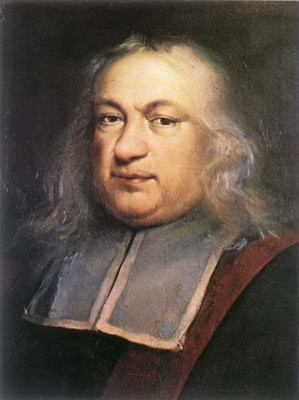Pierre de Fermat (nonfiction): Difference between revisions
No edit summary |
No edit summary |
||
| Line 6: | Line 6: | ||
He is best known for Fermat's Last Theorem, which he described in a note at the margin of a copy of Diophantus' ''Arithmetica''. | He is best known for Fermat's Last Theorem, which he described in a note at the margin of a copy of Diophantus' ''Arithmetica''. | ||
On October 18, 1640, Fermat announced his "little theorem" in a letter to [[Bernard Frénicle de Bessy (nonfiction)|Bernard Frenicle de Bessey]]. | |||
== In the News == | == In the News == | ||
| Line 22: | Line 25: | ||
* [[Calculus (nonfiction)]] | * [[Calculus (nonfiction)]] | ||
* [[Bernard Frénicle de Bessy (nonfiction)]] | |||
* [[Mathematics (nonfiction)]] | * [[Mathematics (nonfiction)]] | ||
* [[Blaise Pascal (nonfiction)]] | * [[Blaise Pascal (nonfiction)]] | ||
Revision as of 07:30, 18 October 2018
Pierre de Fermat (sometime between 31 October to 6 December 1607 – 12 January 1665) was a French lawyer at the Parlement of Toulouse, France, and a mathematician who is given credit for early developments that led to infinitesimal calculus, including his technique of adequality.
In particular, he is recognized for his discovery of an original method of finding the greatest and the smallest ordinates of curved lines, which is analogous to that of differential calculus, then unknown, and his research into number theory.
He made notable contributions to analytic geometry, probability, and optics.
He is best known for Fermat's Last Theorem, which he described in a note at the margin of a copy of Diophantus' Arithmetica.
On October 18, 1640, Fermat announced his "little theorem" in a letter to Bernard Frenicle de Bessey.
In the News
January 12, 1665: The San Pietro scrying engine spontaneously generates an elegy for Pierre de Fermat.
Fiction cross-reference
Nonfiction cross-reference
- Calculus (nonfiction)
- Bernard Frénicle de Bessy (nonfiction)
- Mathematics (nonfiction)
- Blaise Pascal (nonfiction)
External links:
- Pierre de Fermat @ Wikipedia

